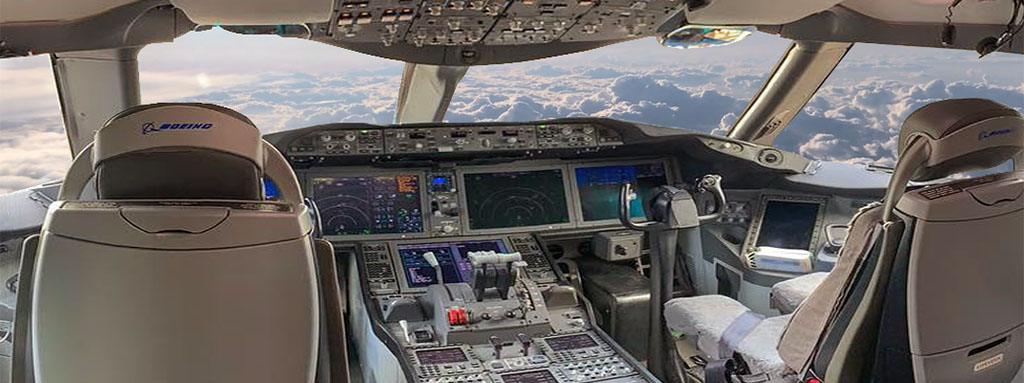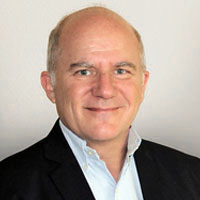Today we talk about an aircraft’s autopilot very naturally, and we think of this technology as being an intrinsic part of the aircraft. This is actually very nearly the case, especially as it is over a century since the innovation was first used. In essence, an “autopilot” is a system that allows the trajectory of a vehicle to be controlled autonomously, without the presence of a human being.
More than a hundred years ago, the first autopilot models were developed, installed and used in aircraft, and the same concept has persisted to the present day.
It was in 1912 that the American inventor Elmer Ambrose Sperry and the German physicist Hermann Anschütz-Kaempfe proposed a system that would allow any moving vehicle to maintain a certain course. Its operation was based on connecting one or more gyroscopes and a compass to the control elements of the vehicle in question. The new system achieved immediate worldwide renown thanks to its installation and use on several dozen U.S. Navy ships.
And it was Elmer Ambrose Sperry’s son, Lawrence Sperry, a great aviation enthusiast, who led the task of making a lighter model of the device, and adapting it for installation in an aircraft.
Until then there had been no great interest in applying the capabilities of a gyroscope to an aircraft. Lawrence Sperry believed that the three flight axes of an aircraft (yaw, pitch and roll) could be controlled by an automatic system if it had one or several gyroscopes as a reference, maintaining the aircraft’s original orientation and state. He was interested in linking the control surfaces of an aircraft to gyroscopes, which would allow corrections to be made based on the angle of deviation between the flight direction and the original gyroscopic configuration. The gyroscopes were designed to maintain zero adjustment for all control surfaces (equilibrium), which would make it possible to identify the moments when corrective action was required. In order for the controls to be carried out, it was just a matter of the device mechanically executing what the pilot would do instinctively.
And based on that concept, Sperry proceeded to resolve all the problems that arose in each phase of the design. Gyroscopes, for example, required electrical power to maintain rotational speed (7,000 rpm). This issue was resolved using a wind-driven generator located on the upper wing, which provided the necessary power.
Weight and size were also key parameters at a time when aircraft did not have any power to spare, and materials were not optimal. Thus, the entire device was reduced to a weight of about 18 kilograms and to the size of a small suitcase (45 x 45 x 30 centimetres).
When the time came, it was Lawrence Sperry who demonstrated the system’s operation at the Concours de la Securité en Aéroplane (Airplane Safety Competition), which was held in Paris in early 1914.
The 56 aircraft that participated in the competition presented a wide range of innovations, ranging from assisted starts, automatic stabilisation, novel carburettor models, extravagant designs and other proposals aimed at improving aircraft safety. Teams from several different countries took part, although the largest number of participants came from France.
Sperry’s innovation consisted of his system to provide the aircraft with automatic stability and control. It was, as we have seen, a fairly simple device consisting of a quadruple gyroscope that operated the ailerons, stabiliser and tail rudder. He installed it on a Curtiss C-2 single-engine airplane with a seaplane fuselage.
Lawrence Sperry flew the plane on the 18th of June. He did so accompanied by Emil Cachin, a newly hired French mechanic with whom he could barely communicate, since neither of them spoke the other one’s language. Even so, they managed to understand each other as regards everything they needed for the test.
When it was time for the demonstration, the Curtiss C-2 took flight from the Buc airfield, near Paris, and headed along a route where thousands of fans, curious onlookers and the judging panel had gathered, between the Parisian bridges of Argenteuil and Bezons.
Once lined up along the route where they were going to be assessed, and once the aircraft was flying straight and level, both crewmembers raised their hands to demonstrate that the aircraft could maintain its flight without any changes. Not satisfied with that, in a second pass in front of the judging panel, Cachin left his seat and climbed on to one of the wings, moving a couple of metres away from the fuselage, while Sperry put his hands on his head. The mechanic moved along the wing to force the aircraft to become unbalanced, and thus demonstrate that it was capable of regaining balance on its own. The gyroscope-equipped stabiliser immediately corrected the change in position, and the plane proceeded along the river with no issues. As if this were not enough, and in the middle of the fever pitch of excitement that had been generated in the crowd by the demonstration, in another one of the passes each of the two crew members climbed on to a wing to wave to those below, thus demonstrating how well the invention worked.
Afterwards, one of the judges got into the plane to corroborate what they had seen. Lawrence Sperry then gave the judges a final spectacle by showing them a take-off and landing that were partially controlled by the automatic device.
Of course, Sperry won the competition, which earned him a prize of 50,000 francs, along with international recognition.
The development of Sperry’s autopilot for aircraft coincided in time with another important innovation that has also survived to this day. Until that time, aircraft had different control systems and mechanisms. Piloting different aircraft required very different knowledge and skills in each case, as the handling of the control surfaces, mechanisms and engines were very different in each case, as were the skills required for take-off and landing. The Societé de Production Armand Deperdussin developed a central control lever to operate ailerons and stabilisers, and pedals to control the rudder. This would greatly facilitate the operation of aircraft control surfaces, which in turn would directly benefit the development of Sperry’s autopilot.
The next step was the development of an unmanned aircraft that could fly towards a specific target guided by the gyroscopic device. However, World War I put a stop to some of these innovations, which, as we all know, emerged years later.
Sperry’s first autopilot was born as a result of the need to assist the pilot during their mission and free them from some of the work. Flying for an extended period time at the controls of an aircraft was hard work, tiring out the arms, shoulders and back. This system solved that problem.
Modern autopilots incorporate many capabilities that Sperry probably never even dreamed of, such as maintaining a programmed speed, accelerating or reducing speed in a programmed way, following a programmed route plan, aligning the aircraft with the runway, and performing a fully automated landing. But the essence of the device remains the same. Sperry’s contribution to aviation was therefore absolutely fundamental.



